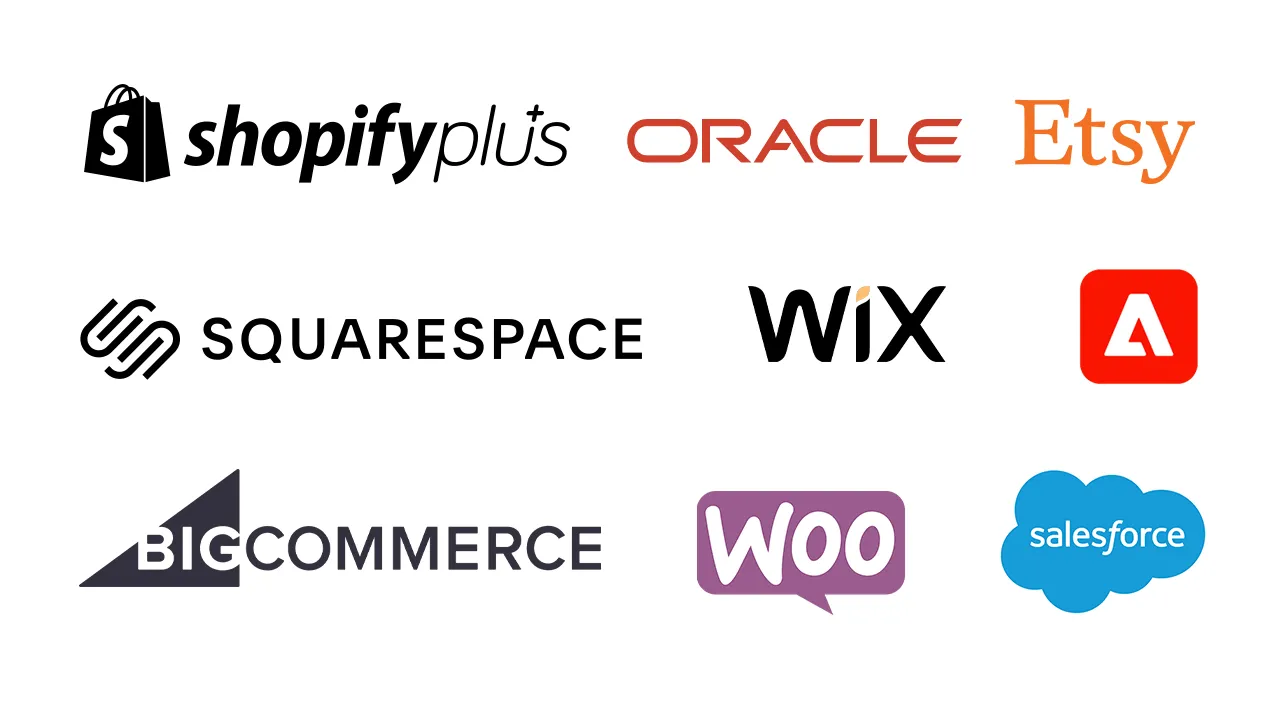ChatGPT now draws a staggering 1.4 billion visits every month, transforming the way people uncover brands and goods online. In this guide you’ll discover exactly how we leveraged that tidal wave of attention to attract our first 10 000 users—and, more importantly, how you can position your own company to flourish in an AI-first world.
A Once-in-a-Generation Shift
We are living through the most dramatic technological upheaval of our era. For the first time in recent memory, Google’s formerly unshakable grip on more than 90 % of global search traffic is slipping. Such tectonic disruptions always bring risk, but they also create extraordinary openings for nimble marketers willing to adapt.
One of today’s greatest opportunities is simple: get your brand mentioned inside ChatGPT (and similar large language models such as Claude, Llama and Mistral). These systems might feel like opaque black boxes, yet you still wield remarkable influence over how they describe and recommend your products.
We did exactly that—and the results speak for themselves.
Why Earning a Spot in ChatGPT Matters
Cast your mind back: ChatGPT became the first product ever to reach 100 million users in just three months. According to SimilarWeb, the service now welcomes roughly 3.6 billion visits each month—approaching five percent of Google’s volume and still growing fast.
Visibility inside ChatGPT confers benefits beyond pure traffic. Answers generated by the model carry an aura of authority; when your brand appears in that context, users instinctively assign you additional credibility.
Unlike classical search engines that fixate on keyword matching, ChatGPT blends factors like relevance, authority, review sentiment and overall brand reputation before deciding what to surface. Mastering those levers is the new frontier of discoverability.
How ChatGPT Chooses What to Recommend

Although ChatGPT does not display a public “ranking” the way Google does, it still evaluates websites, brands and products through algorithms that consider both historical training data and up-to-the-minute information fetched from the live web.
Neil Patel’s analysis highlights four core signals:
- Brand Mentions – Frequent, positive references across diverse platforms broadcast trustworthiness.
- Relevance – Content must satisfy the user’s intent and deliver concise, useful answers.
- Reviews – Strong ratings on portals such as Google Reviews or Trustpilot reinforce credibility.
- Recommendations – Third-party articles that endorse your offer can nudge ChatGPT toward featuring you.
Understanding (and deliberately strengthening) those signals is the key to climbing ChatGPT’s invisible ladder.
Ten Actionable Tactics to Dominate ChatGPT Results
Below are ten integrated moves—tested in the real world—that will expand your footprint inside AI-generated conversations.
1. Open Your Site to OpenAI and Other LLM Crawlers

First, ensure that OpenAI’s bot can actually read your pages. Update your robots.txt to grant explicit permission. Going a step further, many forward-thinking sites now include an llms.txt file: a mini sitemap that guides language models through important sections and clarifies context. The open-source spec lives at llmstxt .org.
2. Measure How ChatGPT Already Talks About You
Fewer than 20 % of ChatGPT’s outbound mentions contain clickable links, which makes conventional web analytics inadequate. Services such as ChatBeat generate an AI Visibility Score by sampling model responses for key questions, giving you a baseline to improve. You can still tag any URLs you share with UTM parameters so traffic labeled “chatgpt” shows up in Google Analytics, Piwik PRO or Heap.
3. Amplify Organic Brand Mentions
Online PR remains your friend. Issue newsworthy announcements, craft compelling guest posts, collaborate with influencers and participate in niche communities. Each genuine reference grows the corpus that language models ingest, elevating your odds of being suggested.
4. Encourage (and Respond to) Positive Reviews
Delight customers first; then make leaving feedback effortless. Follow-up emails with direct links to Google, Trustpilot or Yelp increase the review count. Always reply—politely—to every rating. The dialogue signals that you care and it feeds a positive feedback loop ChatGPT recognizes.
5. Cultivate a Reddit Presence

Reddit discussions are now part of OpenAI’s training pipeline. That means authentic participation inside relevant subreddits accomplishes two goals: it drives direct platform traffic and simultaneously seeds material that may resurface in ChatGPT. Host an AMA, answer questions helpfully, avoid hard sells, and your karma—both literal and algorithmic—will rise.
6. Produce High-Quality, LLM-Friendly Content
Content marketing has evolved from simply engaging readers to educating machines. Write articles that mirror the natural phrasing of real questions, use clear structure with descriptive headings, and implement schema markup. Blend evergreen deep dives with timely hot takes to remain authoritative and fresh. Don’t overlook multimedia: OpenAI likely transcribes YouTube videos, so publishing thoughtful clips can grant another avenue into the model’s knowledge base.
7. Secure Third-Party Recommendations
Identify journalists, bloggers and complementary brands whose audiences align with yours. Personalize outreach by citing their previous work, offer exclusive data, and propose cooperative ventures like joint webinars. Genuine relationships spawn unpaid endorsements that carry weight with generative AI.
8. Trigger ChatGPT’s “Search With Web” to Crawl Your Domain
The premium tier of ChatGPT lets users force a live web search. By asking prompts that include site:yourdomain.com, you—or your audience—can nudge the model to pull fresh material. Ensure that the target page sits on a reputable domain and clearly names your brand.
9. Separate SEO Content From GAIO Content
What satisfies Google’s crawler may not be optimal for generative AI outputs (often nicknamed GAIO: Generative-AI Optimization). Publish a second, ChatGPT-optimized version of important articles—perhaps on a subdomain—and mark it noindex so it doesn’t confuse Google. This variant can lean harder into conversational phrasing and explicit brand attributions.
10. Launch a Branded GPT in the Marketplace

OpenAI’s GPTs Marketplace now allows anyone to publish a custom assistant fed by their own documents, FAQs and case studies. Name yours with a clear brand cue (e.g., “Brand24 Listening Assistant”) and embed it on your site. Each user interaction serves as a signal that your knowledge is useful—reinforcing future mentions inside the broader ChatGPT ecosystem.
Looking Ahead: The Next Wave of ChatGPT Ranking Factors
Artificial intelligence never rests. To keep your edge, monitor these emerging trends:
- Real-Time Data Fusion – Models will blend live information seamlessly with historical training. Consistent publication of fresh content will become non-negotiable.
- Structured Metadata – Tools such as schema markup and the proposed llms.txt will gain importance, enabling models to parse context faster and cite you accurately.
- Verified Authority – Partnerships, certifications and proof-of-expertise will help you stand out as trustworthy amid a deluge of generic AI text.
- Personalization – As models learn more about individual user preferences, niche-specific content will surface more often. Tailor materials to defined segments, not just broad categories.
- Multimodal Emphasis – Video, audio and interactive assets will likely receive preferential treatment. Start diversifying beyond pure text now.
- Regulatory Compliance – Transparency requirements are coming. Brands that share data ethically and label AI usage clearly will avoid visibility penalties.
- Community Engagement Signals – Lively participation on Reddit, GitHub or specialized forums will feed the datasets that fashion tomorrow’s language models, indirectly boosting your profile.
By anticipating these shifts—and executing the ten practical steps outlined above—you’ll ride the AI wave rather than being swamped by it.
Key Takeaway

ChatGPT’s rise is not a passing fad; it is a structural change in how people locate information and decide what to buy. Treat the model as both search engine and trusted adviser. If you supply it with well-structured, high-value information—and cultivate the ecosystem signals it interprets—you can propel your brand from anonymity to authority, just as we did on the journey to our first 10 000 users.
Start adapting now, while the field is still young, and watch your visibility soar in the conversations that will shape the next decade of digital discovery.






Leave a Reply